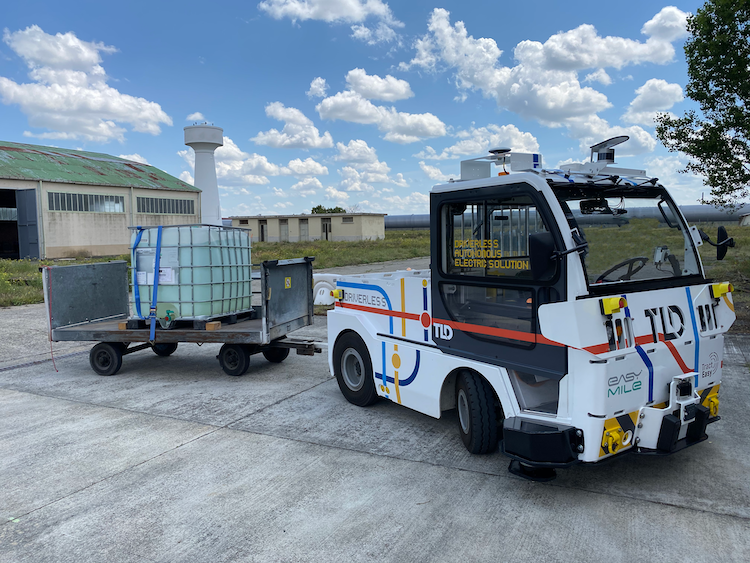Into the limelight
Pharma has been at the very epicenter of the pandemic. More than 1 billion vaccine doses have already been administered worldwide – enough to inoculate nearly 9% of the global population.
COVID has upped the pressure on the sector’s supply chain. Alongside responsibility for delivering the largest vaccine rollout in history, coronavirus has also sparked monumental changes in areas like warehousing and logistics.
Mail-order prescriptions have rocketed upwards. Global lockdowns meant more people staying at home rather than visiting a pharmacy. Drugstore chain CVS, for example, reported online prescription orders rising 1,000% at the height of the pandemic.
At the same time, social distancing and workforce restrictions have presented a challenge for manufacturing processes – at a time when the need for speed and efficiency has never been greater. This is where we believe the benefits of adopting greater levels of automation come in.
Reforming for the future
The pharma supply chain has already proved itself highly responsive, finding ways to meet the challenges of the pandemic. But even as the coronavirus subsides, the industry is acknowledging it needs to find ways to make operations faster and more efficient, while not compromising quality or safety.
One particular challenge for the sector, for example, is its extremely specific material-handling needs. Regulators such as the US Food and Drink Administration have stringent rules on ‘appropriate storage conditions,’ with different drugs having varying requirements for temperature, humidity and even lighting. A typical warehouse will need temperature and climate controls, as well as segregated areas to avoid cross contamination.
Even without the limitations COVID puts on warehousing, such as one-way systems and social distancing measures, companies are exploring increased process automation in the supply chain. Pharma giants, such as Roche and Novartis, are among those already incorporating robotics and automated guided vehicles, such as large forklifts into their warehouses and distribution facilities.
How can autonomous transport help?
Vehicles like the TractEasy, an electric tow tractor with Level 4 autonomy (driverless transport without the need for a human supervizor on board), are perfectly suited to large pharmaceutical production sites. They can help pharmaceutical companies overcome some of their main logistics challenges, for today’s COVID recovery and the longer term.
Reducing human interaction
With Level 4 autonomy, vehicles can travel safely without an on-board supervizor, thanks to an extensive sensor set including radar, lidar, cameras and V2X (vehicle-to-everything) communication.
In the short term, this enables site operators to manage virus-prevention regulations and protects against further potential shutdowns due to COVID outbreaks. In the longer term, driverless vehicles make it easier to segregate areas, reducing the risk of cross contamination.
Flexibility
Autonomous vehicles give warehouse operators maximum flexibility on their site. The TractEasy is monitored remotely, using our EZFleet system, meaning multiple autonomous vehicles can be supervised at the same time.
The system also requires no additional infrastructure, so routes and functions can be changed easily as demand requires.
Protecting margins
The pandemic has put margins for the sector under serious pressure. Autonomous vehicles allow companies to reduce warehouse operating costs while increasing safety and efficiency. Long battery life, with up to 16 hours of autonomy on a single charge, and the ability to run on a regular charging cycle, mean a set of driverless vehicles can operate round-the-clock services. The return on investment for the TractEasy is typically achieved in 12 to 18 months.
On the road to radical reform
Autonomous vehicles bring many strategic benefits to the sector. Adopting driverless technology into their production sites means pharmaceutical companies can optimize their operations – creating safer, more efficient, and faster distribution and decreasing operating costs.
At the same time, the world’s eyes are on the industry. By switching to electric autonomous vehicles, a low-carbon mobility solution, operators can make their warehouses sustainable, environmentally – not just financially.
Just a decade ago, a report from PwC said the pharmaceutical sector was in need of a radical overhaul. Companies since then have taken note and have changed the way they operate to reflect the times we live in. The pandemic has pushed them to accelerate the process to keep up with Industry 4.0. Autonomous transport can take them even further.

